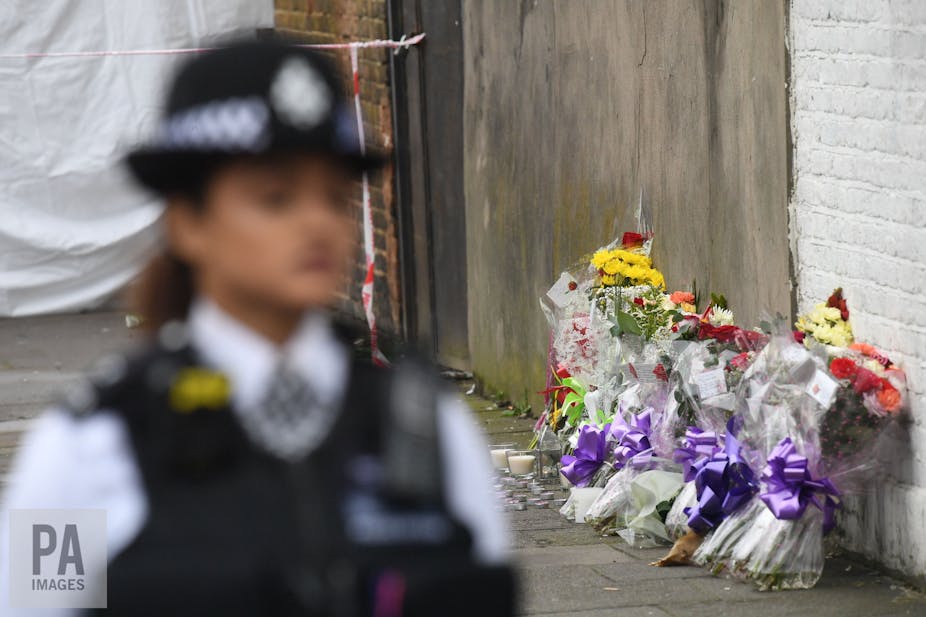As the father of three dual-heritage children living in one of London’s most dangerous boroughs, the recent spate of violence in the UK’s capital city fills me with sadness. It is especially poignant looking at images of child victims who resemble your own – and it is natural to want to do anything to avoid the same thing happening to them.
London MP David Lammy said in a recent interview: “I have a teenager who comes home from school. I’m scared for him.”
I feel the same, and frequently provide a double barrel warning to my own children. First: be careful. Do not get involved in any confrontation that could become violent. Second: avoid doing anything illegal, as the criminal justice system will treat you less sympathetically than your non-BAME friends.
Yet as a criminologist who works in the field of organised crime and gangs, I know that, despite the headlines, not much is new here. And while throughout the UK, the number of homicides has been broadly declining since 2002 there are areas of London, blighted by longstanding issues of deprivation, which are still dangerous. And in 2018, increasingly so.
Tanesha Melbourne, 17, was shot dead in the street on April 2 in Tottenham, in the borough of Haringey. This is the borough where nationwide riots erupted in 2011, and where riots had previously taken place in 1985. Today, Haringey is one of most unequal boroughs in the UK. From the grand houses of Muswell Hill and Highgate to the densely packed estates of Northumberland Park and Broadwater Farm, the vast disparity of wealth is obvious.
For the last ten years, my colleagues and I have been publishing studies which detail an established criminal youth culture concentrated within deprived areas such as Northumberland Park, where the teenager was killed.
Members generate their money from the selling of Class A drugs, street robbery and fraud. The culture is multi-racial and multi-faith but its iconography, borrowed from the US and reinterpreted in the UK, is black.
Although established groups or “gangs” can be involved, it is fast moving, confused and unpredictable. From an adult’s perspective, the violence within it is senseless. Yet from a young person’s point of view, issues of personal respect and relatively small amounts of money are of utmost importance. And if the perpetrators are armed, they can kill innocent bystanders by accident.
What is also well known and long established is that the treatment of BAME young people involved in (or on the periphery of) this culture is unjust and disproportionate. As Tottenham MP David Lammy’s 2017 review pointed out, despite making up just 14% of the population, BAME men and women make up over 40% of young people in custody.
The proportion of BAME men on the Metropolitan Police’s gang matrix which purports to measure organised “violence, criminal offending and gang membership” stands at 86%.
Yet there is also something depressingly new here, too. Faced with the admittedly difficult challenges of tackling societal disadvantage and an established criminal youth culture, the state has retreated on both fronts.
A sense of urgency
Rather than diversifying the police service to make it truly reflect the population it now serves, and accurately targeting stop and search, police numbers and their use of this power have simply declined.
And rather than focusing on the successful evidence-based initiatives to reduce youth violence such as violence interrupters or mediation, the government has reduced its funding for ending youth violence programmes.
It is now time for this to be reviewed. Key partners from active community organisations, the mayor’s office and the police service, need to be brought together and an evidence based plan put forward.
Re-engagement is needed, and soon.

